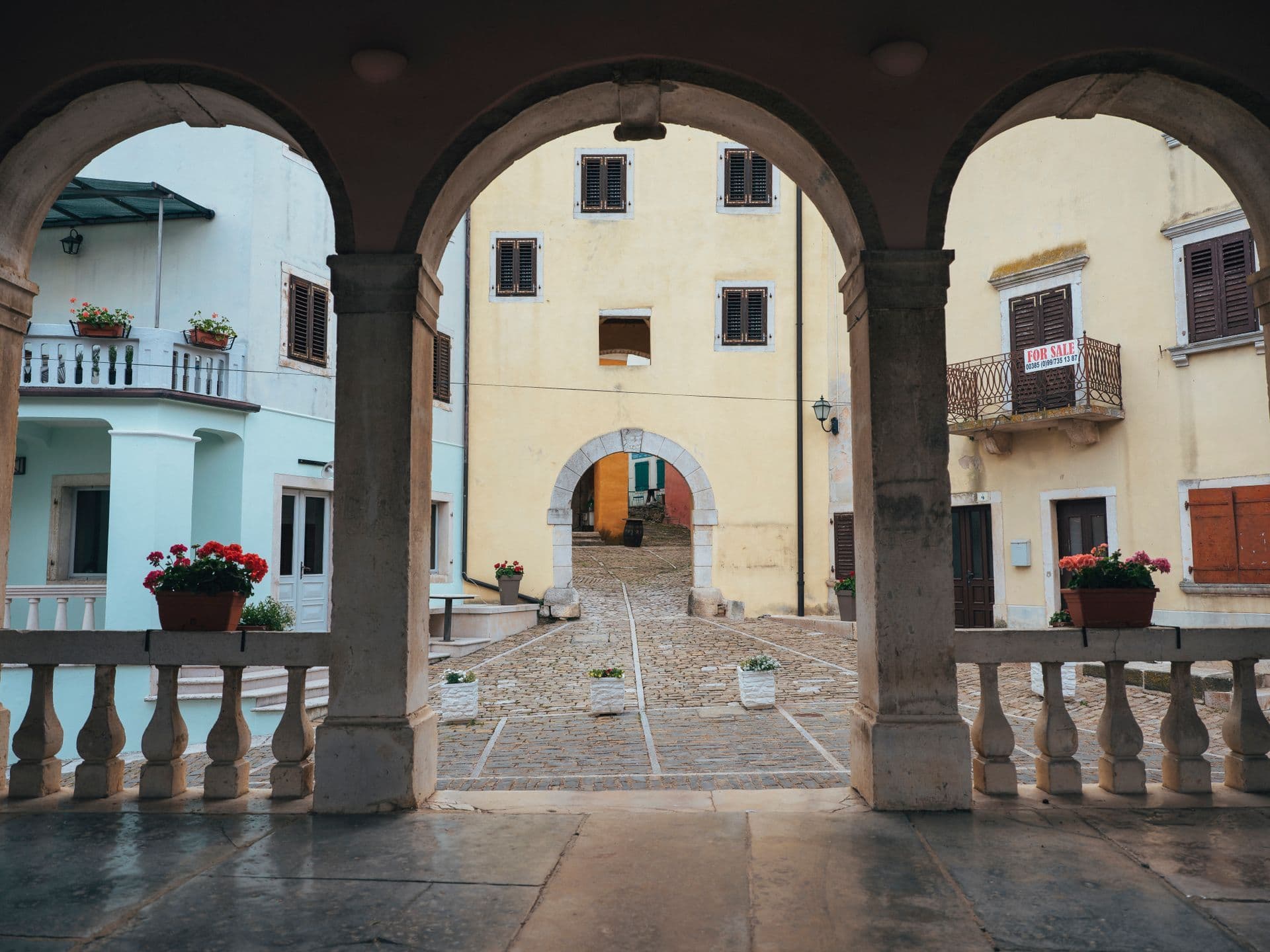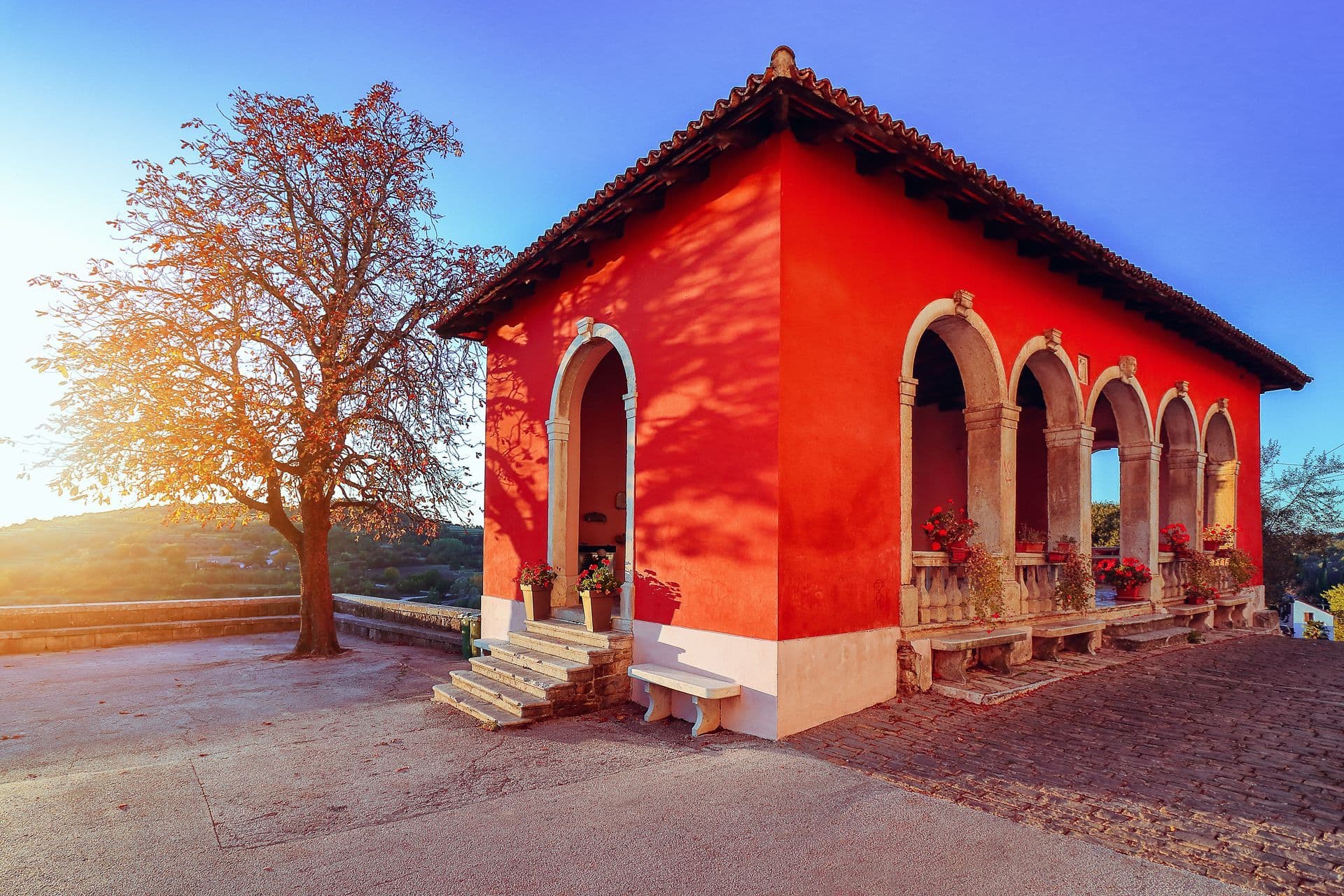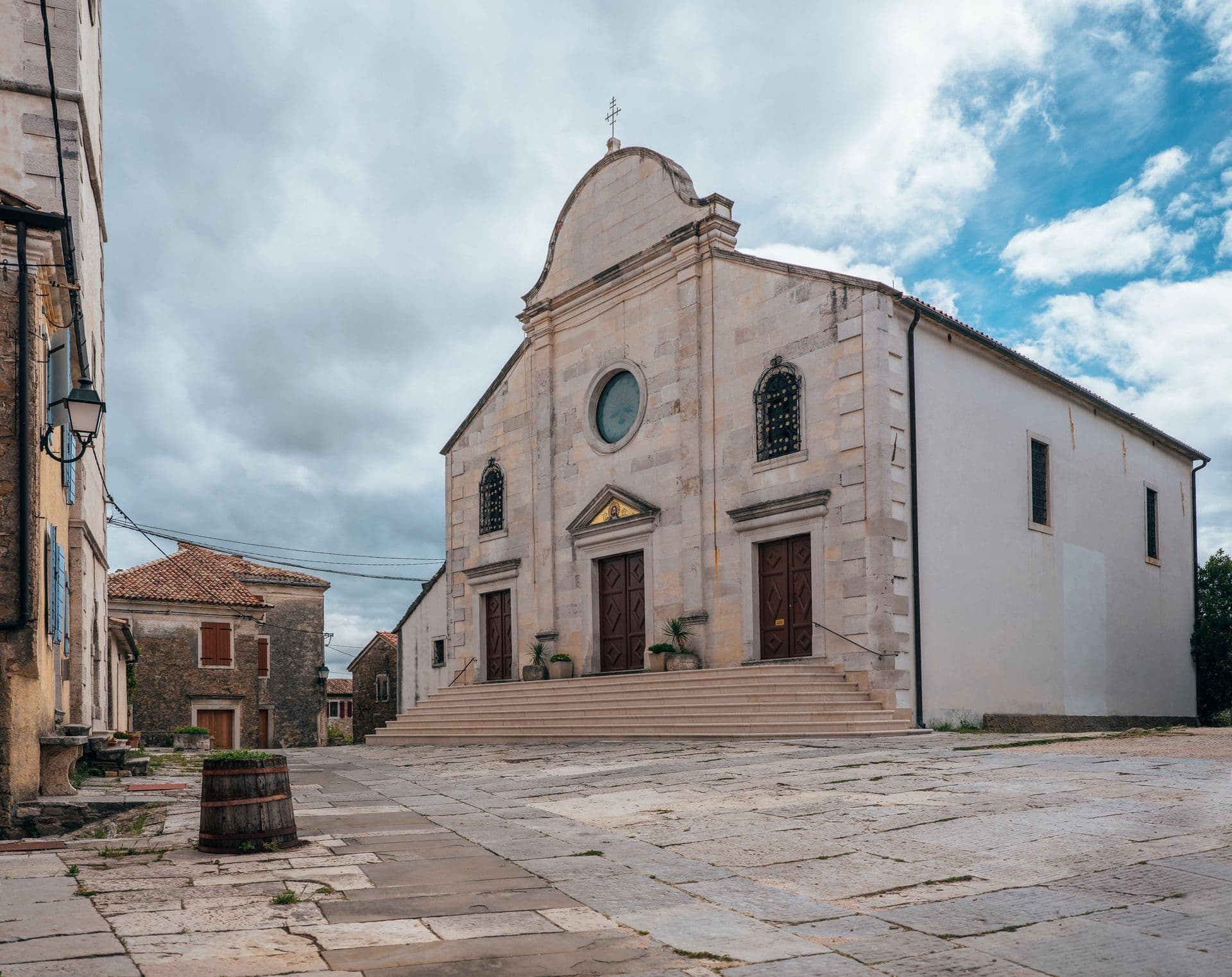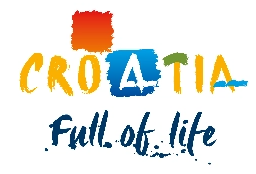





Oprtalj’s historical and cultural heritage
Discover the most important historical and cultural attractions in Oprtalj. This colourful jewel of the Istrian hinterland truly works as chromotherapy for your eyes and soul, so make sure to bring your camera!
Loggia
It is Oprtalj’s most impressive building, where important decisions were adopted, court proceedings conducted, and public announcements read. Sometimes it would even house folk festivals. The loggia was built in the 16th century on the site of an older loggia. The front façade facing the town is recessed by arcading, while the stonework of the other outer walls is characterised by larger openings with a semi-circular arch. One of the balusters bears the inscription ‘ANNO 1765’: carved in shallow relief, it also displays Baroque elements. Until the fall of Venice, it was used as a courtroom. Today it houses a lapidarium with Roman, medieval and later-era stone fragments. It offers a beautiful vista, reaching all the way to the sea, and as such is one of the most visited photo points in Oprtalj.

Bastion
Next to the loggia lies an impressive structure of what once used to be a bastion, whose dimensions are best perceived from the neighbouring hills. In the second half of the 19th century, when an artillery battery was no longer needed, the open flat area within the bastion gradually became a square of the new part of the town underneath the walls. In 1919 a stone monument with a flag pole was erected there.
Town gate
It is the only one out of three gates within the town walls that has been preserved. Reconstructed in 1756, it kept the earlier structural elements such as a walled arch on its left interior side (where soldiers most probably kept guard). Above it there was a tower, which later became a residential building. The upper side of the town gate ends in a semi-circular arch, with the year of 1756 inscribed on the keystone.
Parish Church of St George
Located in the very centre of Oprtalj, it was erected in 1526 on the remains of a smaller church. Its façade displays typical Baroque elements. The building is a three-nave late-Gothic structure built through a detailed reconstruction of the Romanic church that stood there before. It houses valuable altars and paintings from the 16th, 17th and 18th century. The construction of the 27-metre high bell tower started in the 16th century and was completed in 1740. Its confined structure indicates that it was, like many such towers, also used for defence purposes and as a military checkpoint.

Church of St Mary
The church is located by the west entrance to the town, right by the colonnade of cypress trees. It was built in the 15th century, but its front porch and sanctuary were added in 1770. It houses important frescoes dating back to 1471. There are also Glagolitic graffiti, i.e. messages left by literate travellers to document their visit to the church, or an important event that took place nearby.
Church of St Rocco
The church is located by the town’s south entrance, close to the elementary school. It was built in the 16th century on the remains of an older church, as a votive offering to end the plague. It houses important frescoes depicting a series of saints, painted by the renowned Anthony of Padua. A number of Baroque tombstones testify that it is also a mausoleum of renowned Oprtalj families.
Elementary school
The church of St Chrysogonus with a small cemetery once stood in its place. A tombstone, most likely part of the floor of the long-destroyed church, was incorporated in one of the underpinning garden walls next to the school building. Designed by architect Rinaldo Rinaldi from Oprtalj, today’s school building was built in 1818 to accommodate Austrian army soldiers. During World War I and II classes were held in Italian, and in 1955 Croatian was introduced.


Destinations
Additional Information


©2025 Colours of Istria. All rights reserved. No part of this site may be reproduced without our written permission.
























